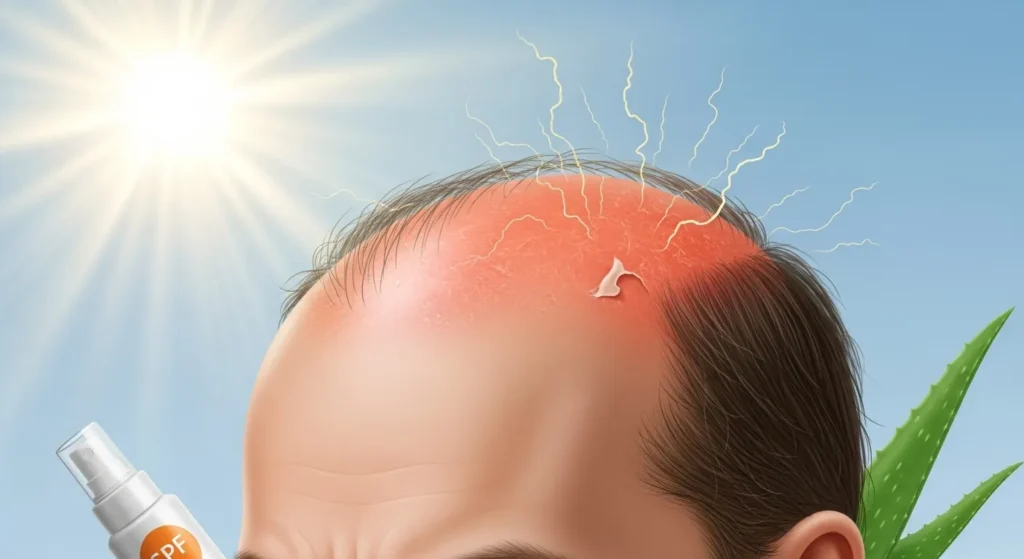Summary
Is it true that hair transplants don’t work for people with gray hair? The answer is no gray hair can be transplanted successfully with natural results.
What really matters is the strength of donor follicles, not their color. With expert techniques, transplanted gray hair grows normally and continues to gray naturally over time.
Introduction
Is it true that hair transplants don’t work for people with gray hair? This is a common concern, especially among older patients considering surgery.
In reality, gray hair can be transplanted successfully, and results often look just as natural as darker hair.
In this guide, you’ll learn the science behind gray hair, how transplants work in older patients, challenges to expect, and expert advice to help you make the right decision with confidence.
Understanding Gray Hair — Biology & Myths

What causes hair to turn gray?
Hair color comes from melanin, a pigment produced by cells called melanocytes in each follicle. As we age, melanocytes produce less pigment, leading to hair that appears gray, silver, or white.
Genetics, stress, and certain medical conditions can accelerate this process, but the follicles themselves remain alive and capable of producing hair.
Common myths about gray hair and “unhealthy follicles”
A popular myth suggests that gray hair means the follicle is dying. That’s false. The follicle is usually healthy; it just produces less pigment. This is why gray hair can still be transplanted successfully.
Can Gray Hair Be Transplanted? Myth or Fact?
The medical consensus
According to the International Society of Hair Restoration Surgery (ISHRS), gray hair can be transplanted just as effectively as pigmented hair.
Follicular Unit Extraction (FUE) and Follicular Unit Transplantation (FUT) techniques work regardless of hair color because they rely on follicle health, not pigment.
What really matters: follicle health and donor supply
The key to transplant success is donor area strength, the number of healthy follicles resistant to hair loss. Whether those follicles grow gray, blond, or black hair is less important than their density and quality.
When gray hair makes the procedure trickier
Gray hairs are harder for both surgeons and robotic tools to detect because they lack contrast against the scalp. Some clinics temporarily dye the donor area to improve visibility. Despite these minor challenges, outcomes remain excellent when handled by experienced surgeons.
Challenges & Special Considerations in Gray Hair Transplants
Visibility and handling during surgery
Because non-pigmented hair is harder to see, surgeons often rely on magnification or temporary dye. This step ensures accurate extraction and placement.
Optical contrast and density perception
Gray or white hair reflects light differently. While darker hair creates a sharp contrast with the scalp, gray hair blends in more, sometimes making coverage appear fuller with fewer grafts.
Hair texture and fragility
Gray hair often has a coarser texture, which can enhance volume and coverage. However, some gray hairs are more fragile, requiring delicate handling during grafting.
Does transplanted hair turn gray?
Yes, transplanted hair follows the genetics of the donor area. If your donor hair is already gray, it will remain gray in the new location. If it’s partially pigmented, it may continue to gray gradually over time.
Blending grafts for natural results
Surgeons often mix gray and pigmented grafts strategically to maintain a natural look, especially in patients with salt-and-pepper hair.
Age and health considerations
Older patients with medical conditions may require special clearance before surgery. Healing times can also be slightly longer with age, though overall results remain consistent.
What to Expect — Timeline, Growth, and Results
Typical transplant timeline
- 0–3 months: Shedding of transplanted hairs; healing of donor and recipient sites.
- 3–6 months: New hair growth begins.
- 6–12 months: Noticeable thickening and improved density.
- 12+ months: Final results visible, with natural growth cycles continuing.
When will gray hairs show growth?
New gray hairs usually sprout between months 3–6, blending in gradually. Patients with mixed hair colors may notice both pigmented and gray hairs emerging.
Long-term graying process
Because transplanted hairs age like natural ones, they may continue to turn gray in line with your genetics. This ensures a natural, age-appropriate look.
Post-Transplant Care & Maintenance — Gray Hair Edition
Wound care and healing
Post-operative care is the same regardless of hair color: keep the scalp clean, avoid scratching, and follow your surgeon’s instructions for medications and washing.
When can you dye transplanted hair?
Most surgeons recommend waiting at least 4–6 weeks before applying hair dye. After this period, transplanted follicles are strong enough to handle chemical treatments.
Styling and sun protection
Gray hair can be more vulnerable to sun damage. Using UV-protective sprays or hats during healing is especially helpful.

Follow-up care
Routine checkups with your surgeon help ensure graft survival. Some patients choose touch-ups after several years if graying progresses further.
Choosing a Clinic & Surgeon for Gray Hair Transplants
What to ask during consultation
- Do you have experience with gray hair transplants?
- Can I see before-and-after photos of gray-haired patients?
- Do you use special tools or techniques for non-pigmented follicles?
Cost considerations
Hair transplant costs usually depend on graft count, not hair color. However, additional steps like donor-area dyeing may slightly extend the procedure.
FAQs
Do hair transplants work on gray hair?
Yes, gray hair can be transplanted successfully. Pigment does not affect follicle health.
Will transplanted hair turn gray?
It will follow your genetics. If your donor hair is gray, the transplanted hair will remain gray.
Is a transplant more difficult if the hair is gray?
Slightly. Visibility challenges exist, but skilled surgeons overcome them easily.
When can I dye transplanted hair?
After 4–6 weeks, once healing is complete.
What is the ideal donor hair for a graying patient?
Healthy, dense follicles from the back or sides of the scalp, pigmented or not.
Can someone whose graying is progressing benefit long-term?
Yes. Transplanted hair will gray naturally, blending with your overall look.
Are success rates lower with gray hair?
No. Survival rates are comparable to pigmented hair transplants.
Does insurance cover gray hair transplants?
Typically no. Hair transplants are considered cosmetic procedures.
Summary
Gray hair transplants are not only possible, they are often highly successful. The main factors are donor supply, surgeon skill, and proper aftercare. While visibility challenges exist, they can be easily managed. Expect natural growth, ongoing graying consistent with your genetics, and long-lasting results that blend with your age and style.
Ready to explore your options? Book a consultation with Dr. Rana Irfan in Islamabad today to discuss your suitability for a gray hair transplant. With years of experience in advanced techniques, he and his team can help you achieve natural, age-appropriate results.
